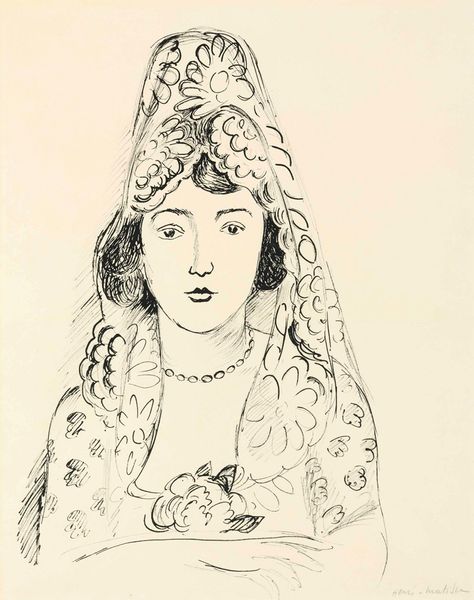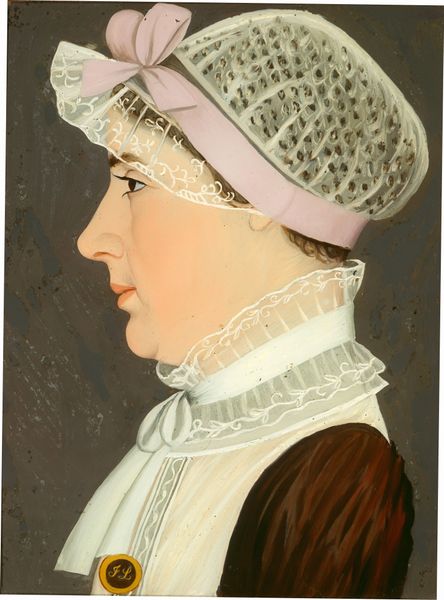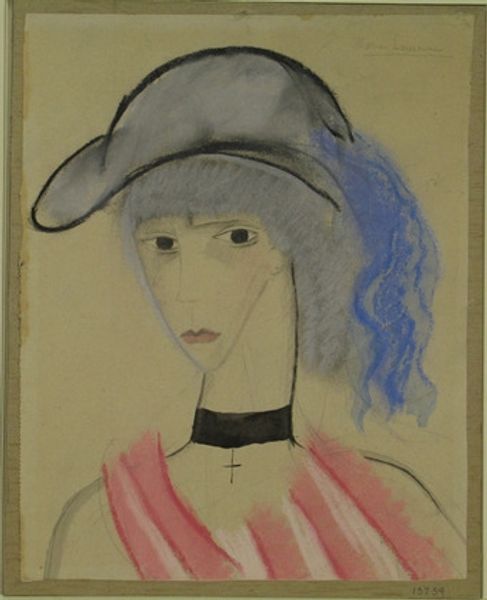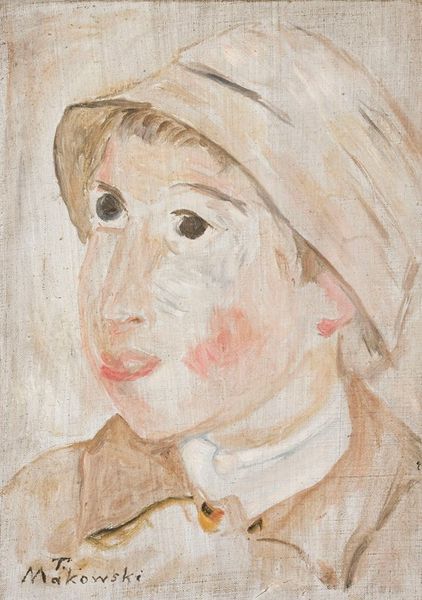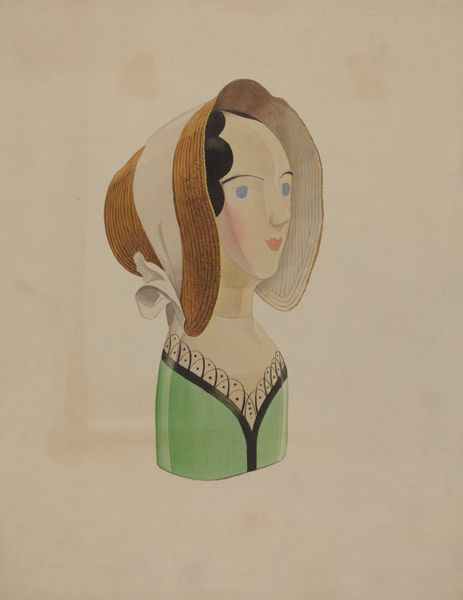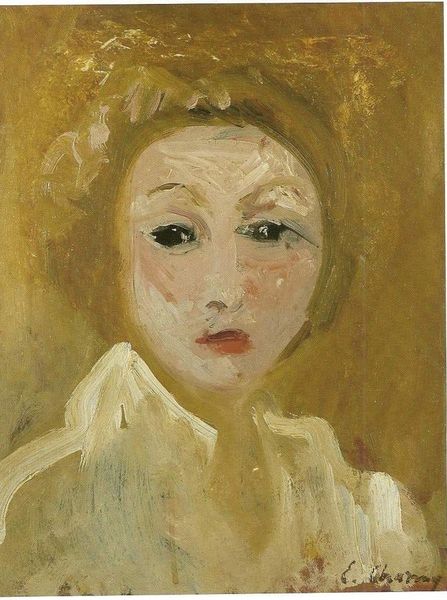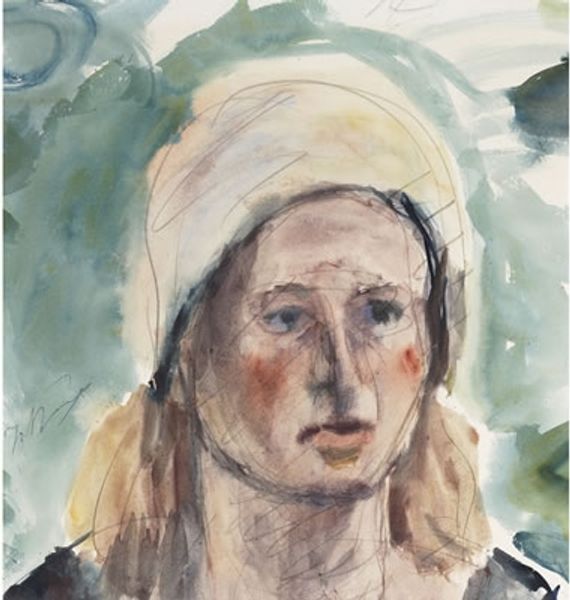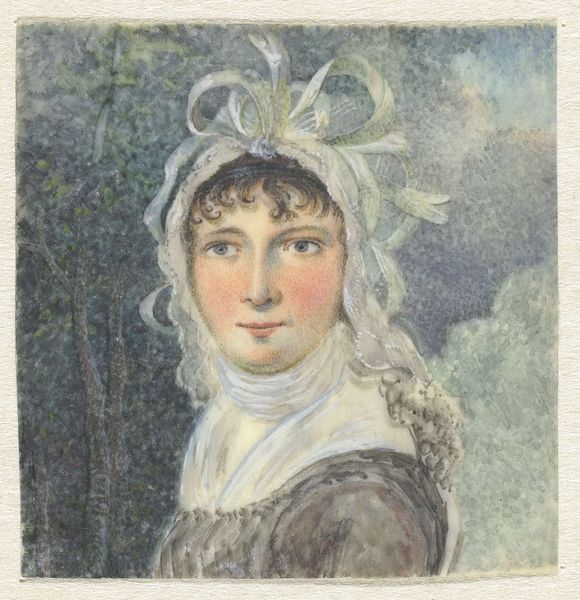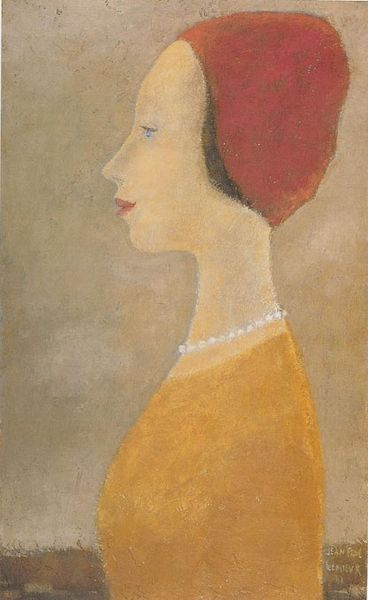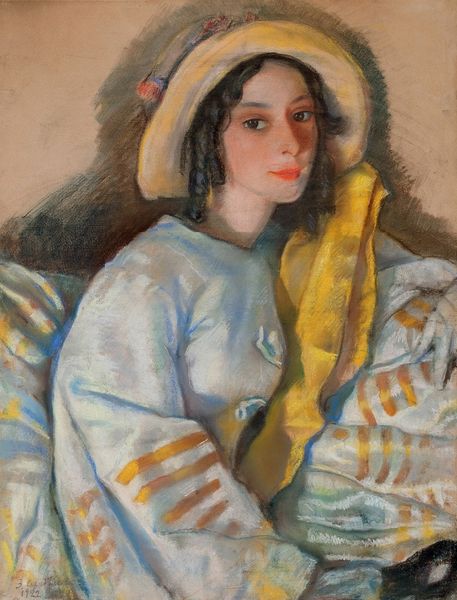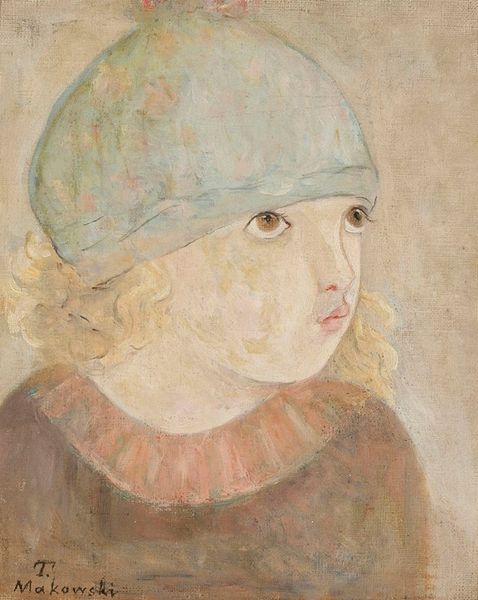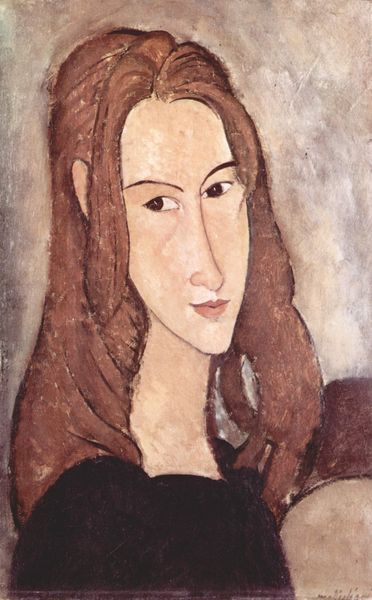
Dimensions: overall: 47.7 x 38.1 cm (18 3/4 x 15 in.) framed: 65.9 x 58.1 x 5.7 cm (25 15/16 x 22 7/8 x 2 1/4 in.)
Copyright: National Gallery of Art: CC0 1.0
Curator: Immediately, there's something unsettling yet captivating in the direct gaze of the figure; it feels almost confrontational despite the delicate washes of color. Editor: Let’s dive into Henri Matisse’s "The Plumed Hat," a watercolor completed in 1919. It presents a young woman adorned with a strikingly large and somewhat ambiguous grey hat, characteristic of his Fauvist period. Curator: The hat is fascinating. It almost appears like a cloud resting upon her head, perhaps symbolizing fleeting thoughts or the weight of societal expectations on women of that era. It’s an arresting feature that pulls you into deciphering her inner world. Editor: Indeed. During the interwar period, we see many artists exploring femininity with complex visual cues. Consider the rise of the "New Woman"—Matisse places his subject within the conversation, subtly playing with both tradition and emergent identities. Curator: And look at how Matisse uses black ribbons contrasting with the grey tones of the hat. The ribbons framing her face seem almost like glyphs—perhaps meant to visually emphasize her allure and social role, but their darkness also hints at potential constraints. The symbolic weight feels very loaded here. Editor: It is interesting that you bring up constraint, because if you put "The Plumed Hat" within the context of the broader art world during the 1920s—this piece highlights Matisse’s move away from the radical intensity of his earlier Fauvist paintings. It aligns with a neoclassical shift seen in post-war art production as he began developing for his Nice period of art creation. Curator: Yet, it's also fascinating to ponder the dreamlike qualities evoked by the fluid watercolor technique, and how this soft medium adds to the intimate viewing experience. It’s as though we are seeing a half-remembered vision rather than a sharply defined individual. Editor: Placing "The Plumed Hat" within Matisse's body of work helps us consider his constant negotiation between representation and pure abstraction, as well as how external factors changed his artistic style over time. His later style feels very tied into his physical placement in Nice, and less about deconstructing the canvas. Curator: Agreed; recognizing the push-and-pull dynamics present within single works offers incredible insights into the trajectory of culture, and especially cultural symbols across time. Editor: Absolutely, seeing it within its historical arc makes "The Plumed Hat" more poignant. We recognize both what Matisse chose to reflect and how history framed his artistic license and changing milieu.
Comments
No comments
Be the first to comment and join the conversation on the ultimate creative platform.

